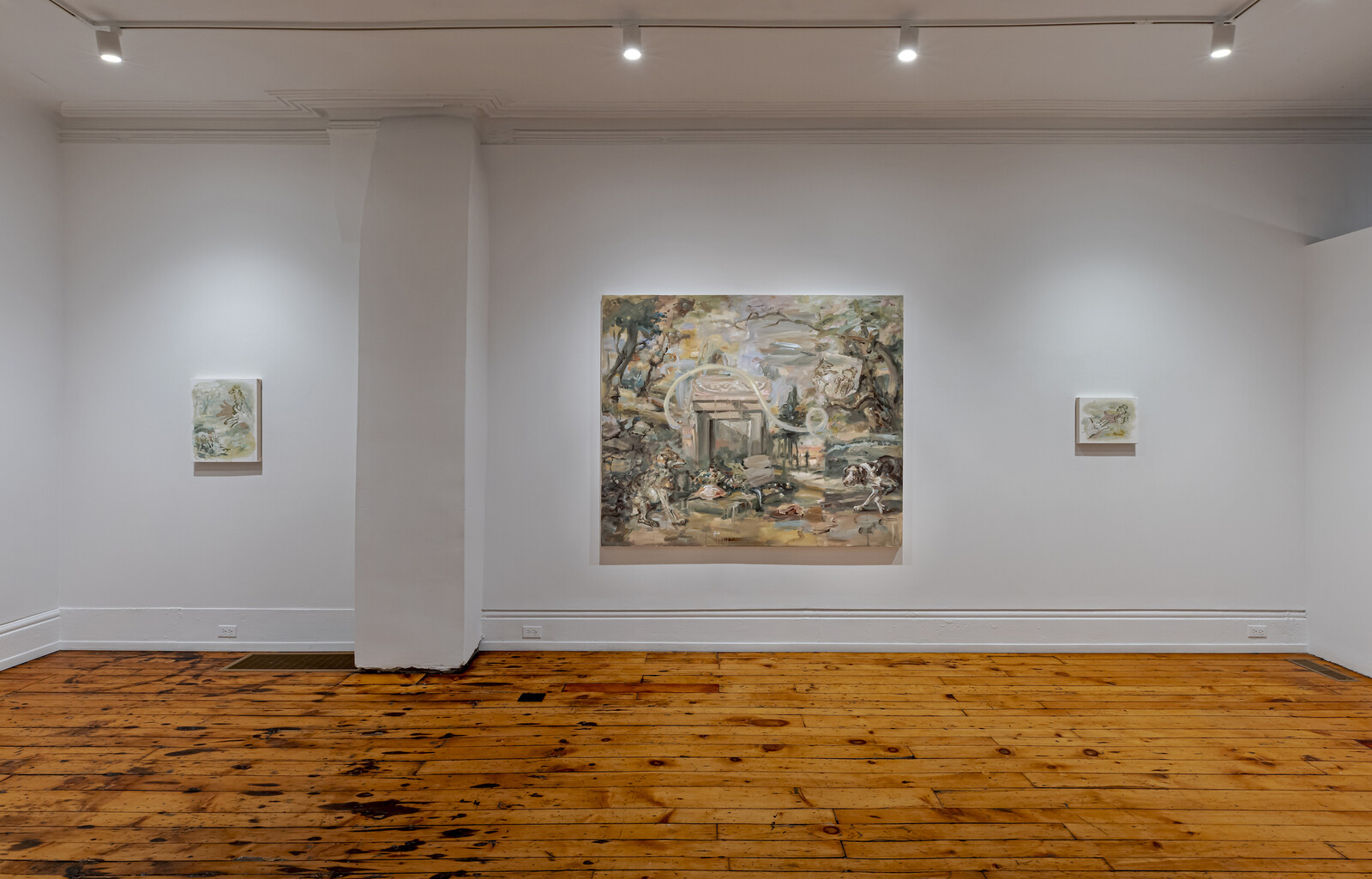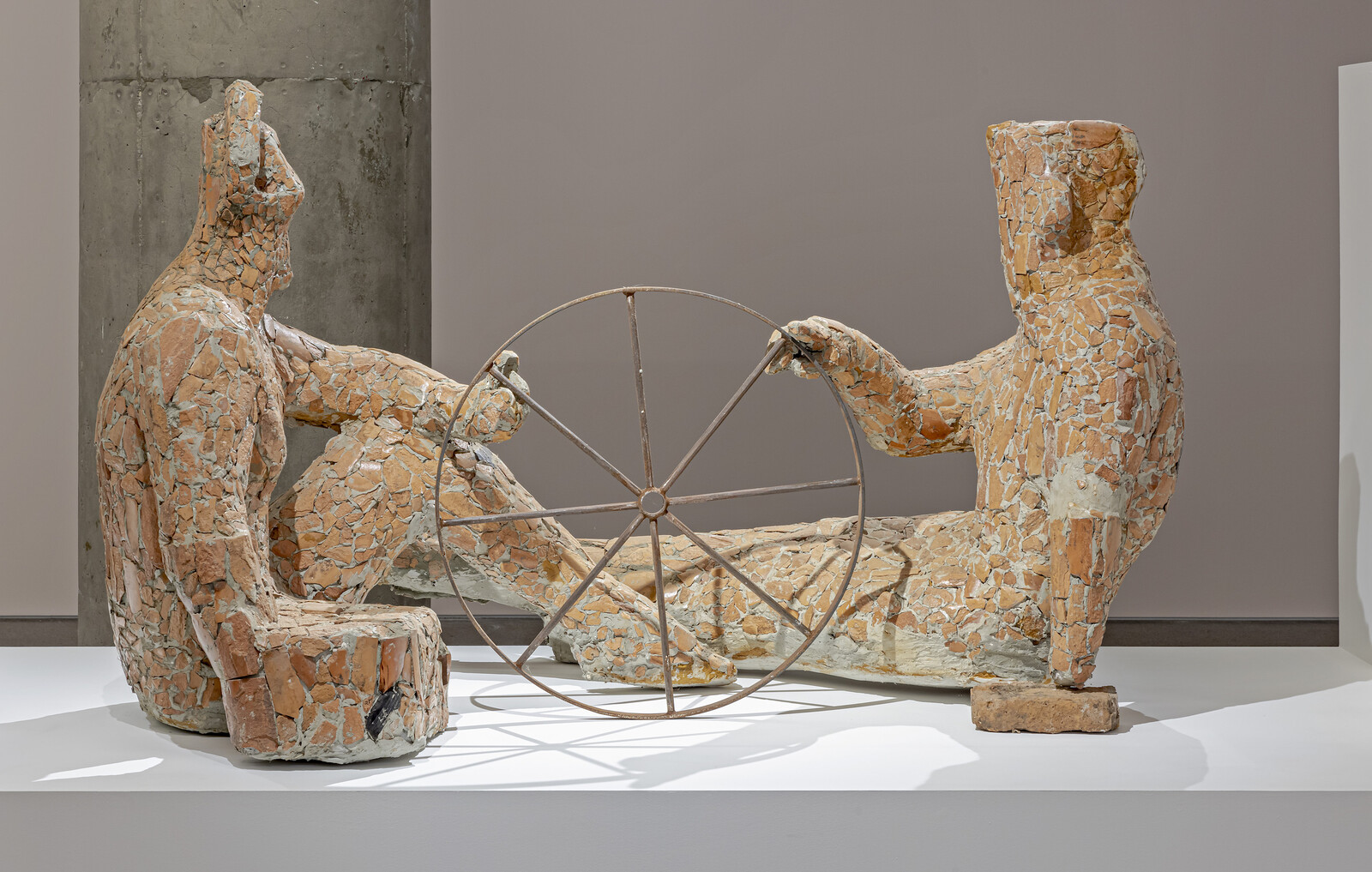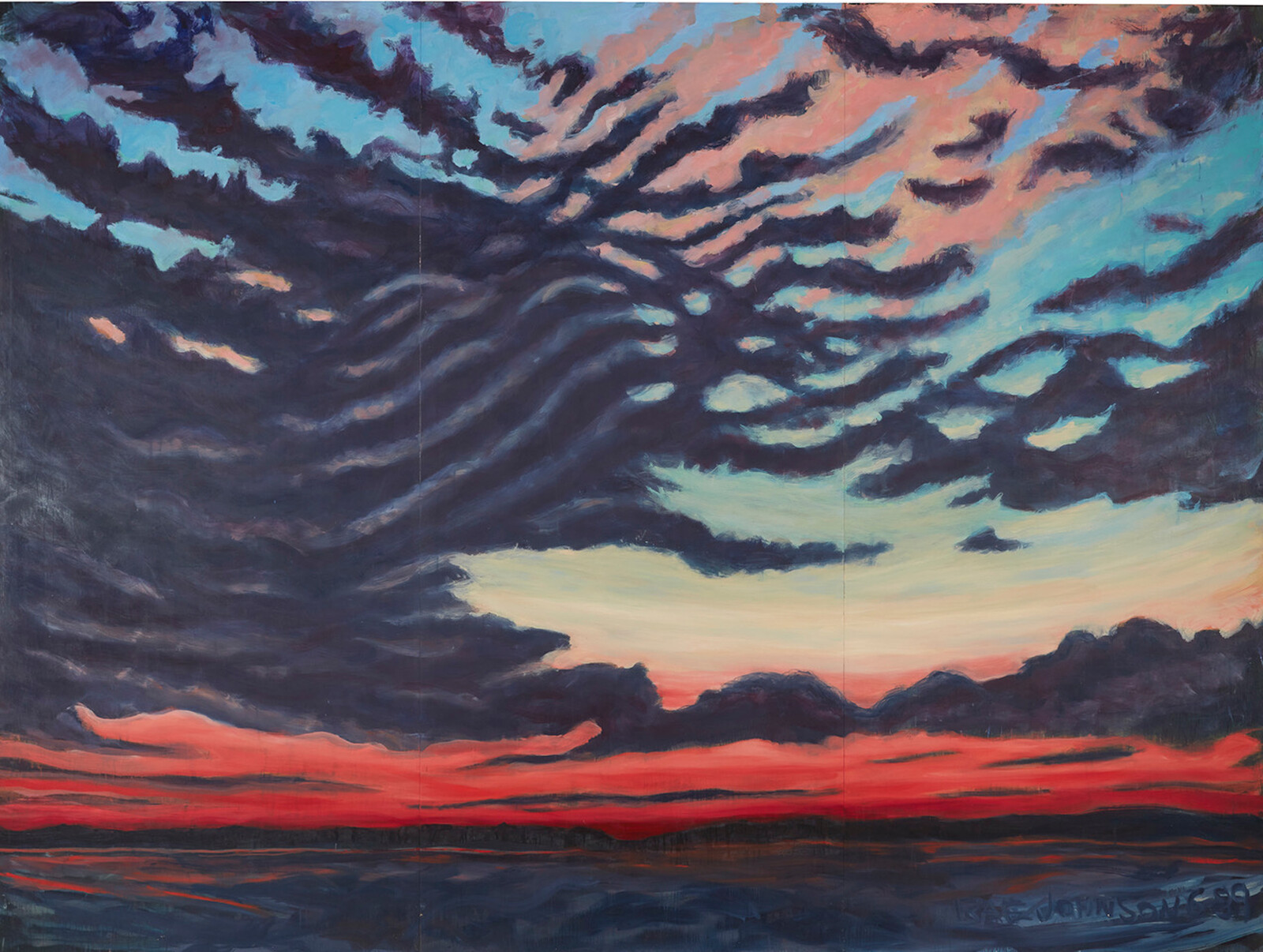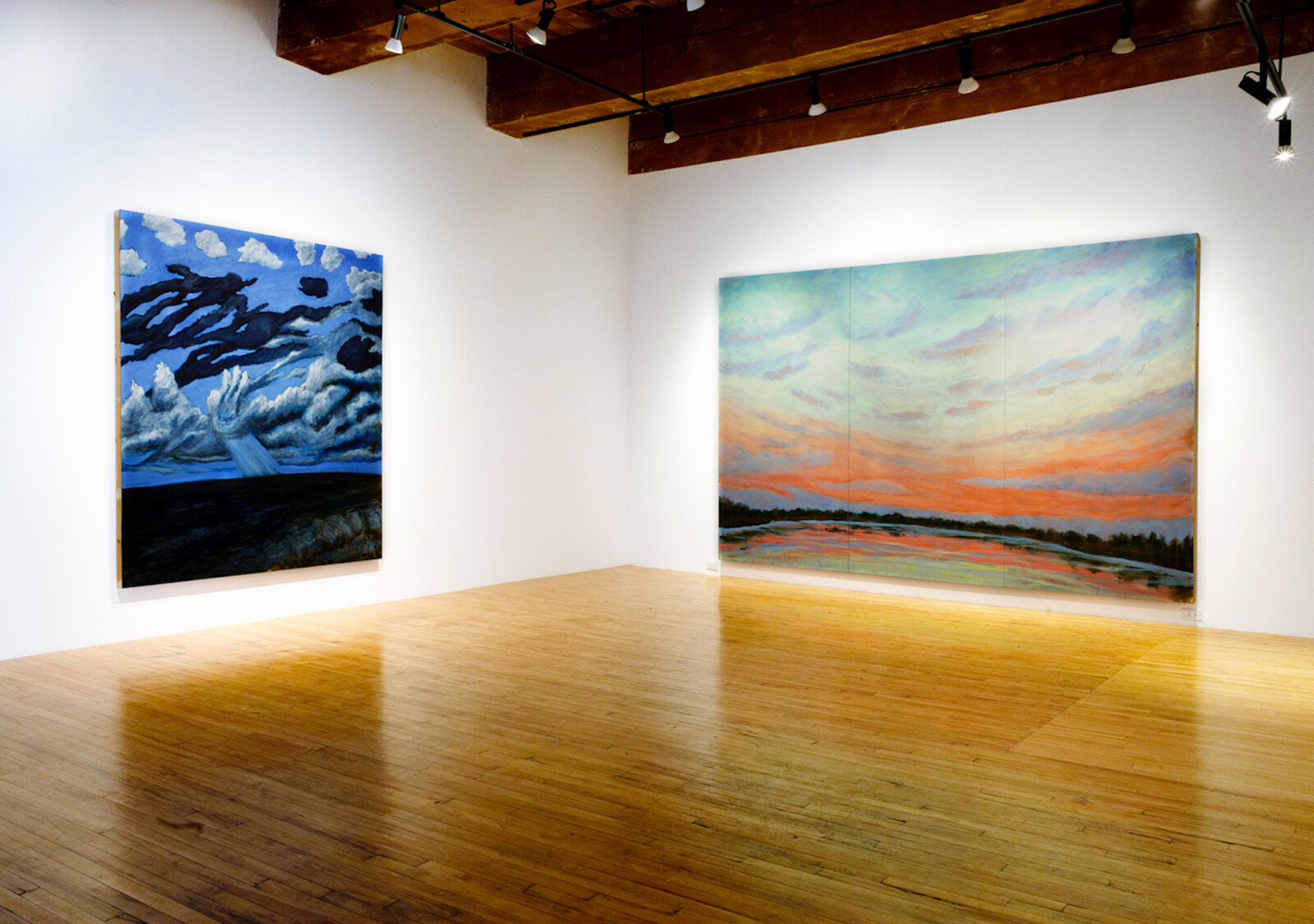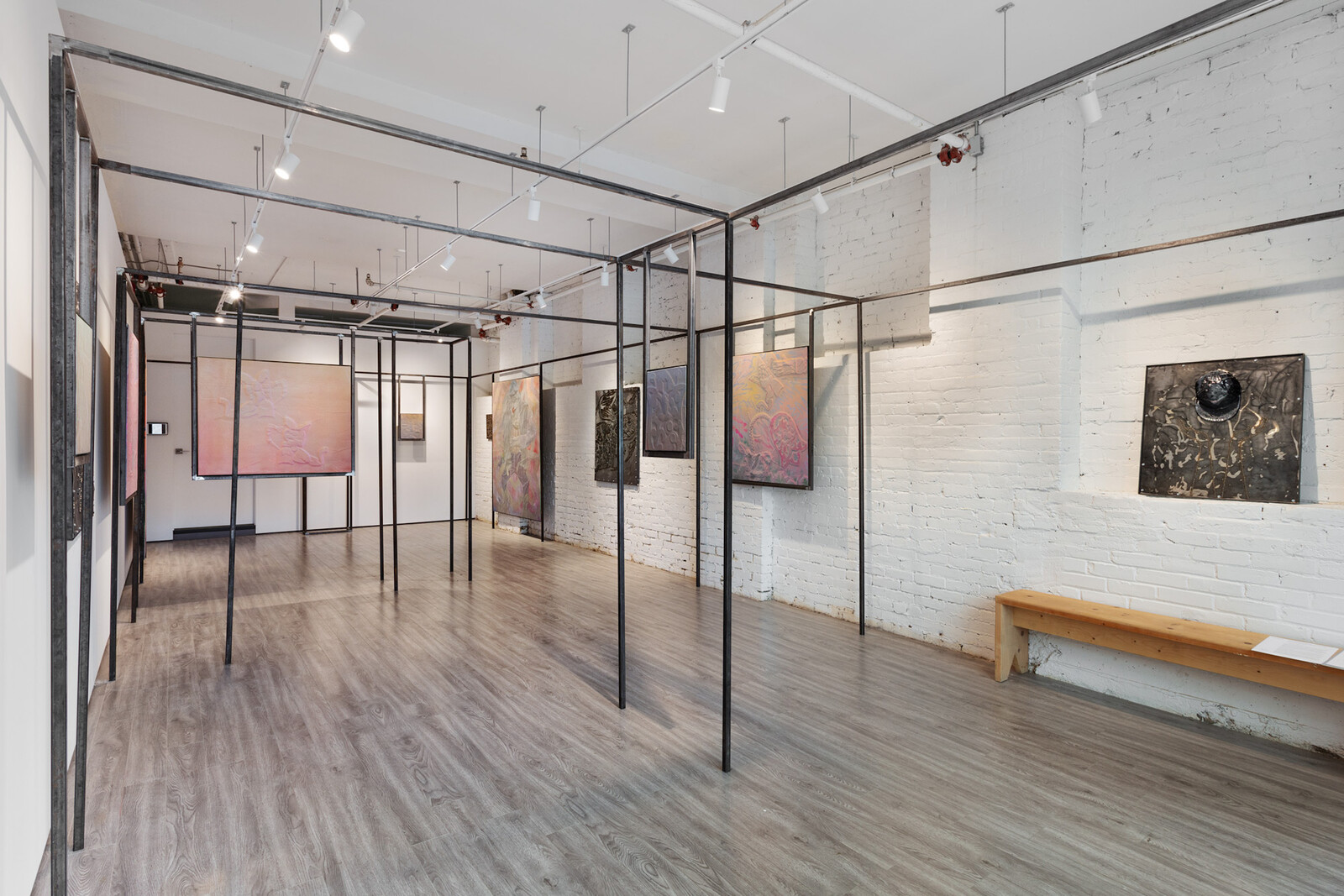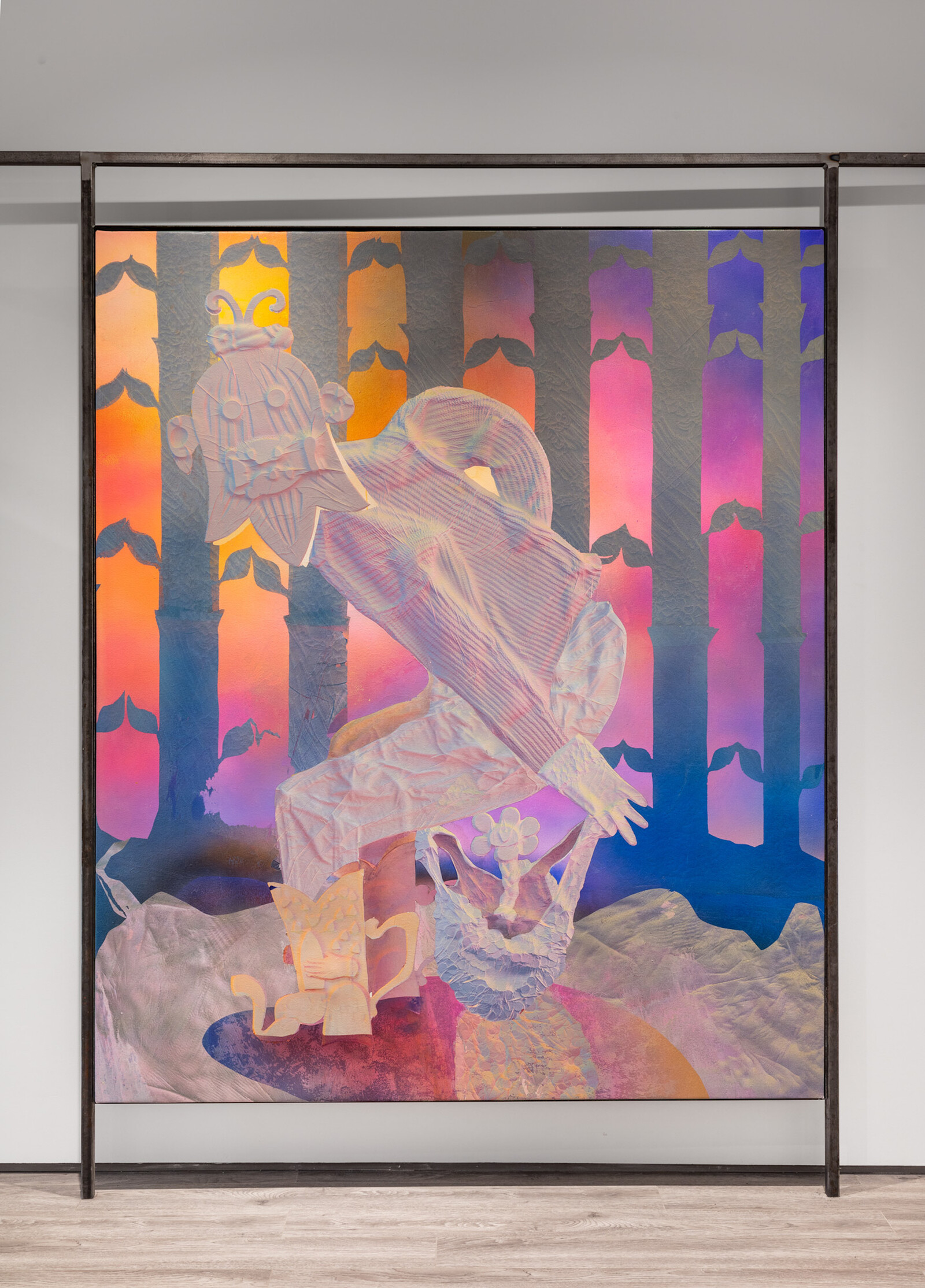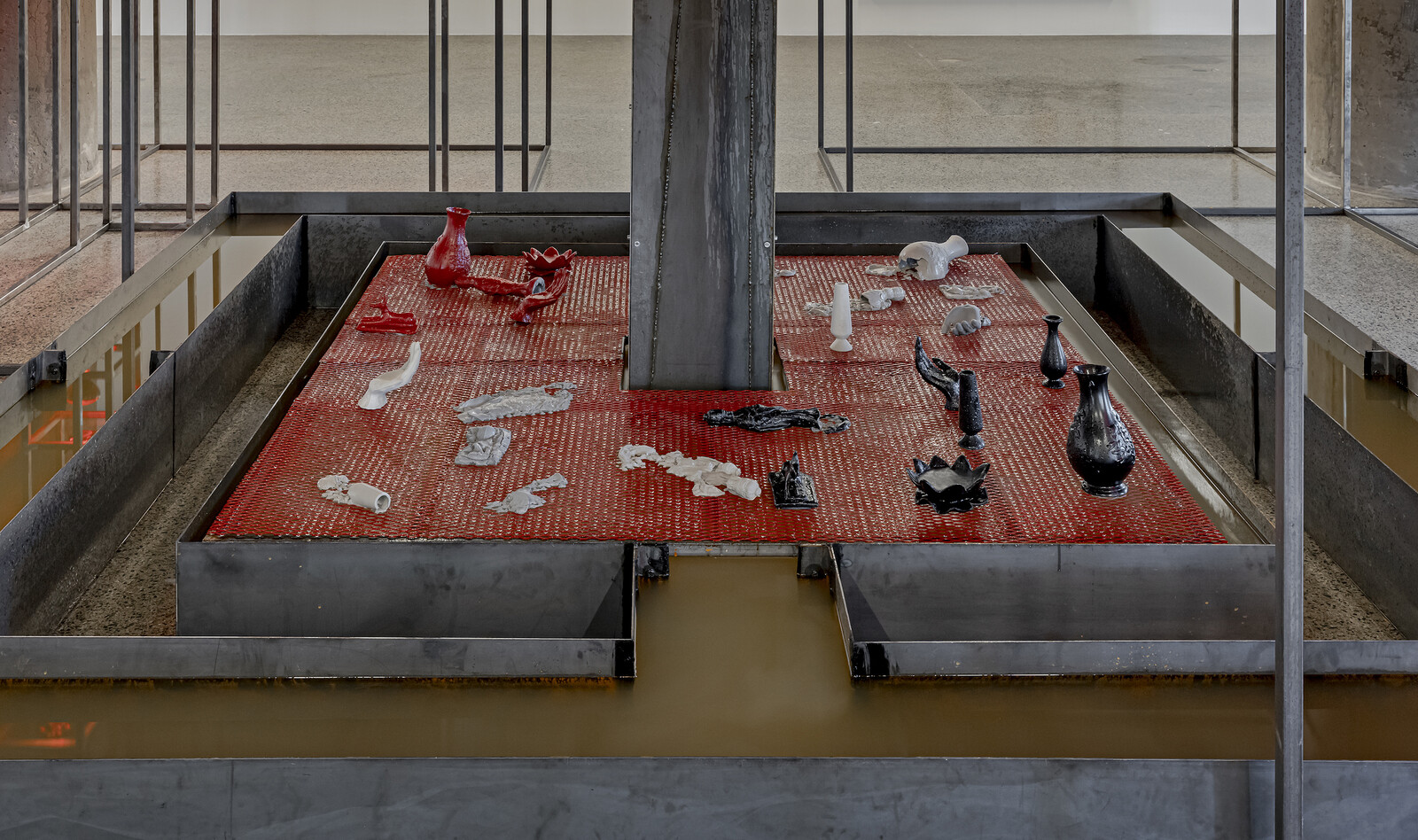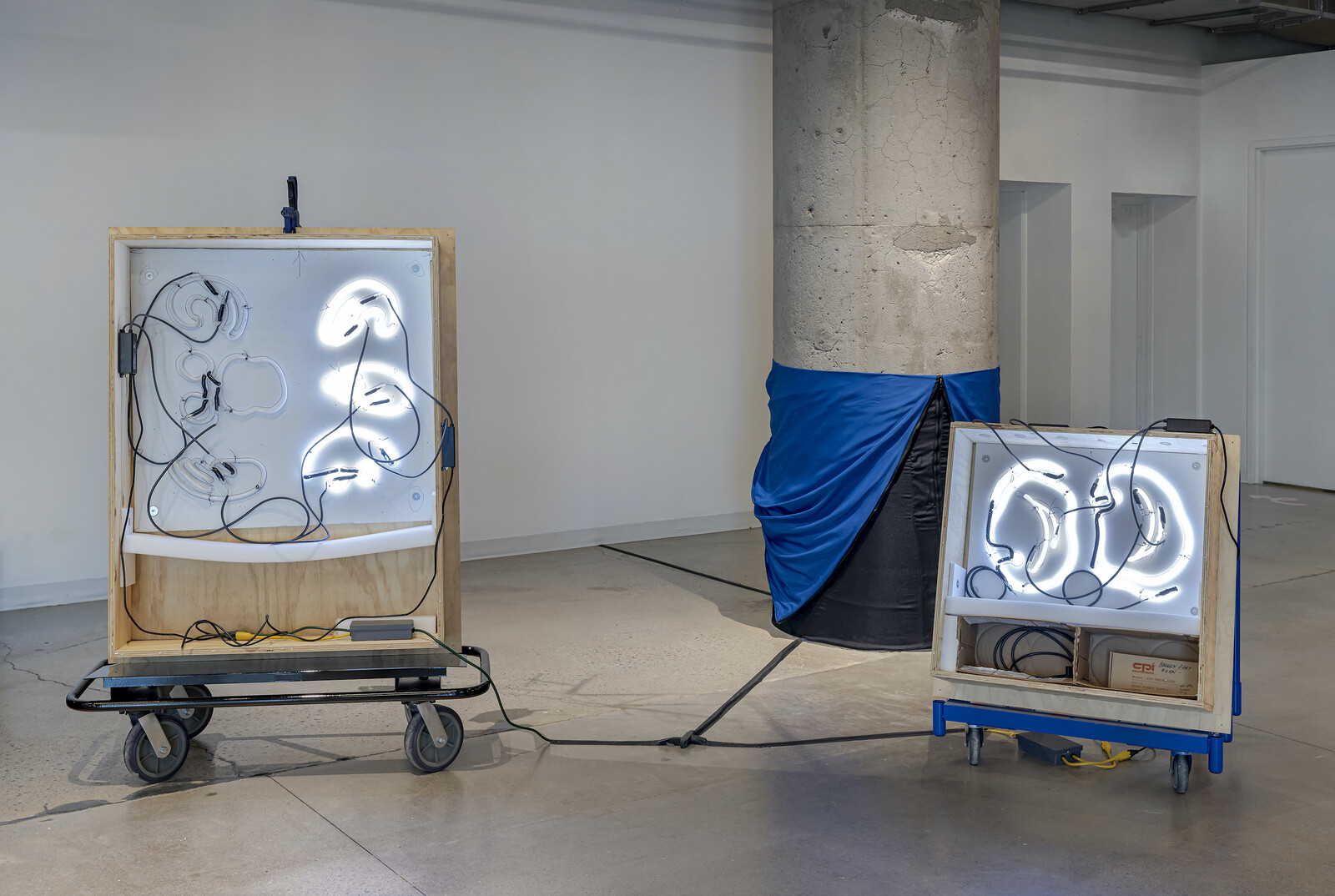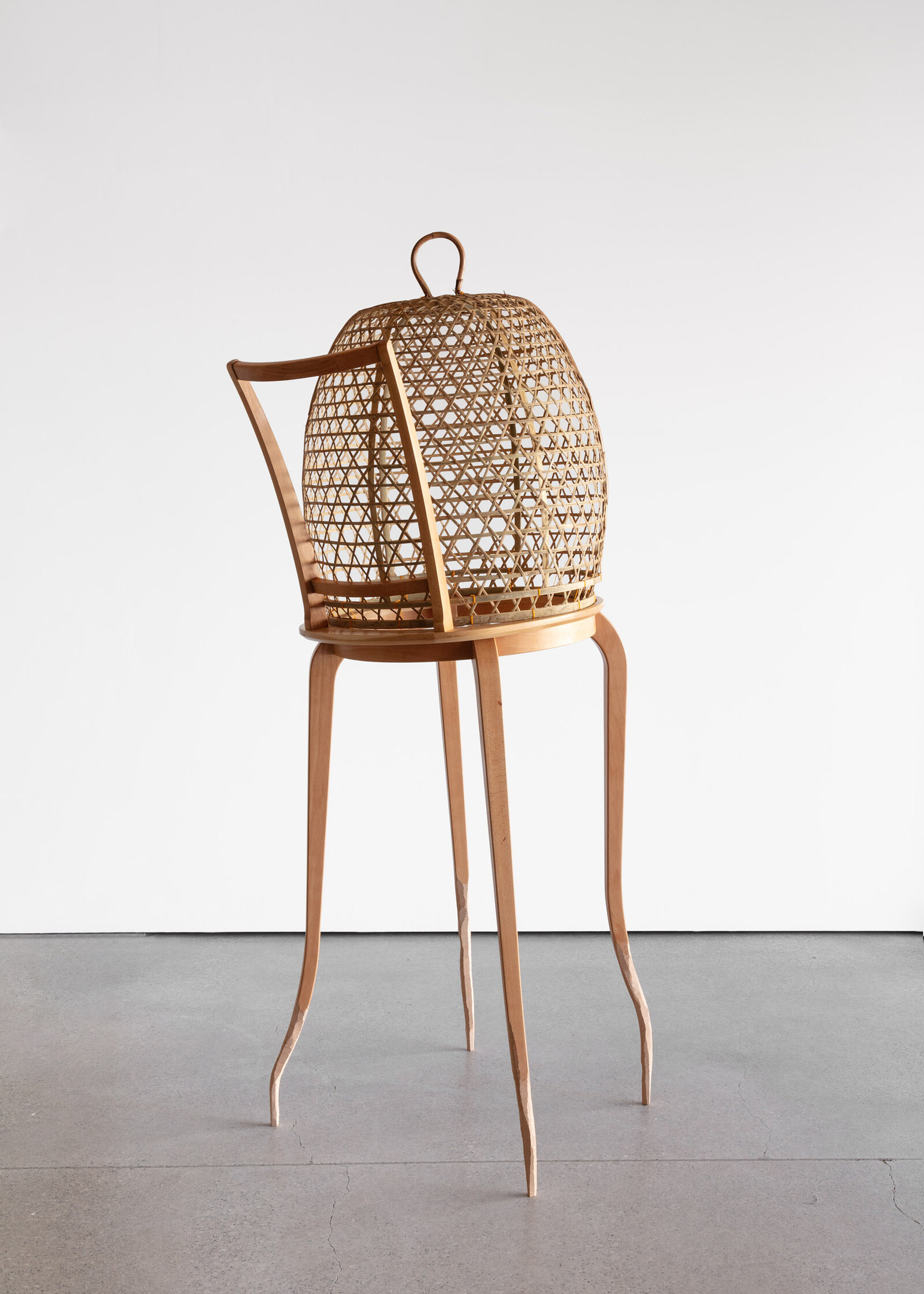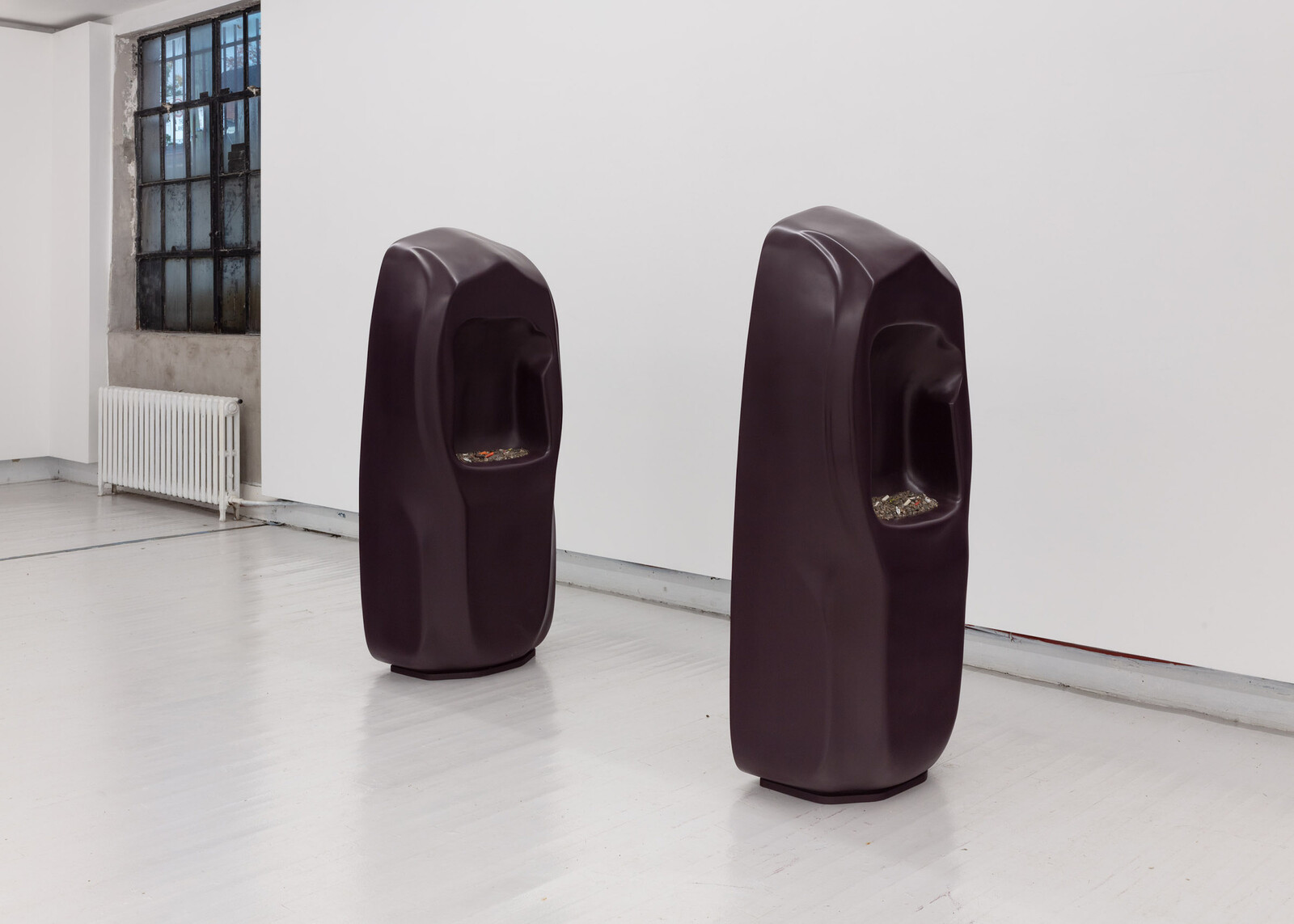My tour of Toronto’s first Gallery Weekend started on a Saturday morning at Paul Petro Contemporary Art, where artist Andy Patton joined Petro in discussing a suite of new Carol Wainio paintings. In view of Wainio’s fluffy, Rococo landscapes, Patton reminded a small audience that paint is essentially “just colored glue.” A few days later, during the opening days of Greater Toronto Art 2021 (GTA), the inaugural edition of a triennial survey of Toronto artists at the Museum of Contemporary Art, I stopped in front of a Tony Romano sculpture (one element of a larger installation titled Between the Lilies and the Birds, 2021): a small, rough face rendered in ceramic. Big blue tears ornamented its right cheek, and the word “SAD” was carved into its chin. I left the museum listening to Lana Del Rey’s “Blue Banisters” (Republican music, sorry) and walked home through the very strong smell of chocolate (the museum is next to a chocolate factory). Something humbling was happening. The city was coming out of what’s been, by some measures, the longest consecutive lockdown of any major international metropolis. The exhausted, perennial questions that attend art’s relationship to event—why do this, who is it for, do we like it, who pays for it—felt to me somehow less urgent than usual. I believed in art’s ability to communicate the melancholic. I was here to see the colored glue.
On my phone I watched September rush through postponed weddings, openings, Met Galas, Art Basels. Exhibitions long delayed opened the season in Toronto. Among these was Rae Johnson’s “Of Light and Darkness” at Christopher Cutts, the second of a pair of exhibitions that Johnson had been planning during the last months of her life. The first opened at Cutts last March, and was still up when Johnson passed away in May 2020. The second was originally planned to follow in the fall, but the city’s lockdown went on, and a year went by. Artist Andy Fabo’s speech at the opening ended with an optimistic note on Johnson’s futurity, noting the affinity younger generations of artists and curators have found with her paintings. In the gallery, large panels featured lunatic clouds and mannered, provocative skyscapes. Though I’m not religious, Johnson’s paintings sometimes make me feel something I can only name as grace, or god.
Interlocution between worlds was also—quietly—the subject of a wild and beautiful two-person show at Towards: siblings Azza El Siddique and Teto Elsiddique’s “fire is love, water is sorrow — a distant fire,” which mirrors a presentation of Azza’s work in GTA. A selection of paintings by Teto, who passed away in 2017, is mounted in an architecture of metal poles now distinctive to Azza’s style (her GTA installation is enclosed in a similar structure, as were recent presentations of her work at Helena Anrather in New York and the Gardiner Museum in Toronto). Azza inscribed steel panels with imagery largely borrowed from her brother’s paintings—figures and patterns excised from their textured, colour-saturated gradients—and hung them alongside.
At GTA, Azza El Siddique’s Fade into the Sun (2021) stages various sensory and dynamic elements—warmth, odor, brightness, darkness, wetness, dryness—in a kind of fountained steel enclosure. Bukhoor and sandaliya burn under the red glow of heat lamps. Water rains from the ceiling, pooling in steel basins on the floor, and drips over a set of slip cast ceramics, whose shape and integrity will erode over the course of the exhibition. The installation is a highlight of the new triennial, which accomplishes an experience that’s somehow both unhurried and concise. With a relatively short artist list for a regional survey of this kind, the triennial doesn’t read as attempting comprehensiveness, or as trying to make any particular image of, or argument about, Toronto (thank god). Instead, curators Daisy Desrosiers, Rui Mateus Amaral, and November Paynter present a somewhat unexpected collection of artists, allowing each significant dedicated space across the museum’s three floors for works mostly newly commissioned.
A perpetual concern for artists working with this institution is how to manage the presence of the museum’s imposing concrete circular columns. Near the entrance, Walter Scott wraps them in zippered fabric as part of his installation Read the Room (2021), suggesting figures both dressed and undressed. Upstairs, the sight of Sahar Te’s Listening Attends (2021), a Toyota Tacoma wrapped in black satin, seems to rhyme with contemporaneous images recently circulating of fabric enclosures, visibility, stealth, power: Christo and Jeanne-Claude’s wrapped Arc de Triomphe in Paris, Kim Kardashian in Balenciaga in New York. Across the room, matte black also covers the surface of Native Art Department International’s Double Gazebo (MOCA) (2021), a structure whose design prevents access. Whereas I had previously interpreted the title of the collaboration between artists Maria Hupfield and Jason Lujan as ironically adopting academic or institutional language, here for the first time I honed in on the term “art department” as it’s used in filmmaking. Double Gazebo (MOCA) comes across as an illegible prop, or scenic architecture for some drama yet unwritten.
Like Azza El Siddique, Ghazaleh Avarzamani had twinned presentations at GTA and gallery weekend, with her sculpture A Romance of Many Dimensions (2021) at the center of the inaugural show of the new Toronto location of Montreal’s Galerie Nicolas Robert. Nearby, Franz Kaka opened its new location with Katie Lyle’s “Back to Lorraine,” where layered and collaged paintings hang over a mural of spectral, almost typographic shapes. “Circuit Trouble,” at Erin Stump Projects, is an ambitious presentation of Catherine Telford Keogh’s chaotic, poppy conglomerates, my favorite of which rendered prefab wet-space objects—a vertical excerpt of a shower stall (SolidAir™) and two upright water basins (TUMS® “Sour Stomach” and TUMS® “Water Brash,” all 2021)—in eggplant acrylic. I admire the way Telford Keogh’s sculptures design visual experience: there’s an abundance of information, too much to see.
At the exhibition opening, Stump cited the rumored closure of Canadian Art, the country’s largest art magazine, for which I had worked as managing editor, as an imperative to organize Gallery Weekend Toronto; she and other dealers had sought to re-create the success of one of the magazine’s educational programs, the gallery hop, at bringing in general audiences. Shortly after, the magazine formally announced its closure, after 37 years of operation. With such changes to the landscape of art production in this country, it’s unclear to me what we’re even resurfacing into. The losses have yet to be accounted.

